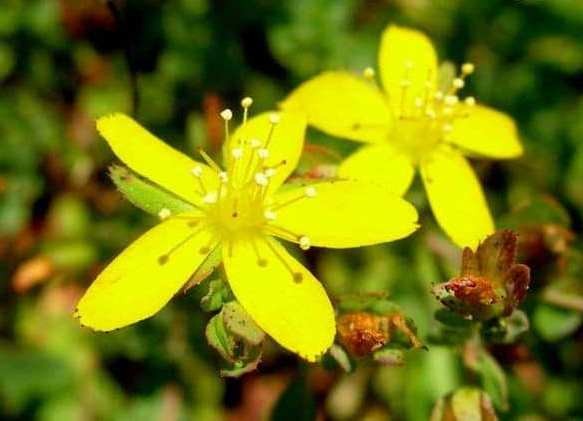Trailing St. Johnswort
(Hypericum australe)

Description
Hypericum humifusum is a prostrate flowering plant in the St. John's wort family Hypericaceae commonly known as trailing St John's-wort. It is found in Western Europe. Hypericum humifusum is a low-growing, hairless perennial. The thin trailing stems have two raised lines and bear opposite pairs of pale green elongated oval leaves, often with tiny translucent glands. The undersides of the leaves have tiny black dots on the edges. The flowers are about 1 cm (0.3 in) across and grow from the leaf axils. There are five sepals of unequal size and five yellow petals, often with a few black dots, and not much larger in size than the sepals. The stamens are united at the base into bundles. The fruits are dry. Hypericum humifusum grows on heaths, dry banks, bare land at the edge of tracks and light woodland. It is found in Western Europe and throughout the British Isles where it flowers from May to September. Hypericum is a genus of flowering plants in the family Hypericaceae (formerly considered a subfamily of Clusiaceae). The genus has a nearly worldwide distribution, missing only from tropical lowlands, deserts and polar regions. Many Hypericum species are regarded as invasive species and noxious weeds. All members of the genus may be referred to as St. John's wort, and some are known as goatweed. The white or pink flowered marsh St. John's worts of North American and eastern Asia are generally accepted as belonging to the separate genus Triadenum. Hypericum is unusual for a genus of its size because a worldwide taxonomic monograph was produced for it by Norman Robson (working at the Natural History Museum, London). Robson recognizes 36 sections within Hypericum.
Taxonomic tree:







